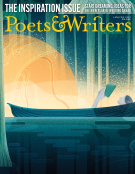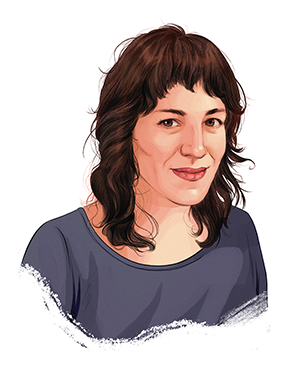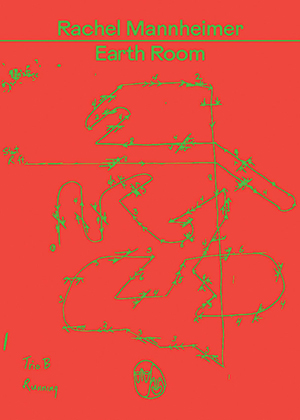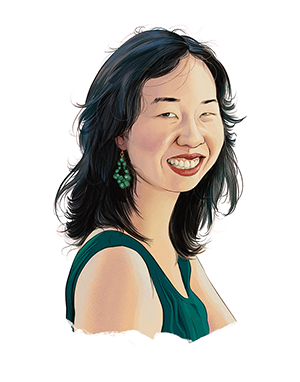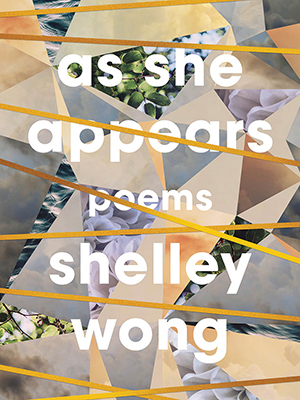Rachel Mannheimer
Earth Room
Changes Press
(Bergman Prize)
A relationship is only that —
the space between two shapes. A shape.
—“Tempelhof”
How it began: I started this book a few months after finishing my MFA at NYU. I moved out of New York City after eleven years and moved in with my partner, and it felt like a big shift. I was in a different place, and part of this new formation, this household. So that was one animating question: What does it mean to move through the world in partnership with someone else?
Also—maybe this is where all writing begins—I was feeling in those months that I couldn’t write. In the MFA I’d written so many poems, and I felt I’d used up all my lifetime’s best anecdotes and hard-earned wisdom. To begin writing again, I had to change my idea of what could go into a poem, to let more in. That meant both small things (birds I saw) and very big things (climate catastrophe, our country’s history of genocide). It also meant more people: friends and exes and various artists I’d long been interested in (which meant research, as I studied their lives and work). All of this material eventually came together, accommodated in one big, book-length poem.
Influences: I’ll mention Claudia Rankine and Tommy Pico, who both changed my sense of what a poetic voice could be, and what that voice could do over the course of a book. There are so many artists in the book itself—Robert Smithson, Walter De Maria, Isamu Noguchi, Yvonne Rainer, Pina Bausch, and others—who helped me think about time, place, scale, collaboration, and the body in space.
Writer’s block remedy: I’m lucky to live with another poet, so it feels like part of our shared life, even when I go months without writing. I’m inspired by his dedication to his work; it helps me believe in poetry’s worth. When I’m at an impasse, a walk usually helps, or any change of location. (There are a lot of locations in the book; inspiration tends to come away from home.) Also seeing art, watching performances—encountering different possibilities of human expression. All of this was a bit harder during the pandemic, but I was able to spend time with art from the past. I was able to drive around New York State.
Advice: Agh, it’s hard. And from what I’ve seen, it remains hard to publish second and third books! The process is slow, and the contest model is frustrating; it feels like you get one shot and then you have no recourse for the rest of the year. But I would say: There’s no rush. Think about what you want from publication, and wait for the opportunity that feels right.
Also, wait for the manuscript that feels right! Before this book, I had a manuscript’s worth of poems; they were thematically related but didn’t really comprise a book. Earth Room, as a book, may be particularly unified—I call it one long poem—but I think of any collection as a kind of macro-poem, assembled with a poem’s logic. It helps to be able to define for yourself what makes the book a book—what makes it an argument for itself and not just an advertisement for you as a poet.
In the meantime, keep writing new stuff. Believe in yourself and find friends who believe in you too.
Finding time to write: I love my jobs, but they both involve a ton of reading and writing and it’s tough—even just physically—to do more of that at the end of the day.
A lot of Earth Room started from notes in Google Docs, which I could add to and edit on my phone—I like to write on walks. Big parts of the book were researched and written at three residencies—Vermont Studio Center and the Studios at MASS MoCA (twice)—which I was able to take some time off to attend.
Putting the book together: I started with the classic laying-out-on-the-floor technique, and because one strand of the book was the story of a relationship over a couple years, there was that chronological throughline. But in the end, there were so many things to balance—all these different places, different characters and artists, lineated poems versus prose poems, “personal” poems versus “art” poems (often not actually distinct)—that I also created a nice, complicated, color-coded table of contents to help me visualize the final order.
What’s next: New poems have been slow to come, but I do have a fresh Google document, and I’ve accumulated a few thousand words…. I’m hoping the seeds of a next book are in there.
Age: 37.
Residence: I wrote the book while living in the Hudson Valley. Now I live in New Haven, Connecticut.
Job: I work as a literary scout, which means I consult for European publishing clients on English-language books to translate for their markets. (I read a lot of novels.) I’m also an editor at the Yale Review. I worked in publishing before I ever started writing, and it’s strange to experience it from the other side!
Time spent writing the book: Most of the poems in the book were written over the course of two years, from January 2019 to January 2021.
Time spent finding a home for it: It was very quick, and very lucky. I’d sent my MFA thesis out three years in a row, but was feeling more distant from that work, more interested in the new stuff. In fall 2020 a great small press called After Hours Editions was running an open reading period; the editors asked for twenty pages of a manuscript, and if they wanted to see more they’d give you a few months to send the full thing. At that time, I had maybe thirty to thirty-five pages of Earth Room, but I had a lot of additional parts, pieces, and notes, so I told myself I could pull it together by their deadline, if they were to ask for more. That was hugely motivating. In early 2021, when the manuscript was mostly finished, I also sent it out to a few contests whose deadlines were approaching, including the Bergman Prize. Then in April, I think, I got a call from the judge, Louise Glück, saying I’d won. I checked in with After Hours before accepting, but they were very supportive and kind about it. Working with my publisher, Changes Press—being their first book, too!—has been wonderful.
Recommendations for recent debut poetry collections: I’ll highlight Ama Codjoe’s Bluest Nude (Milkweed Editions), which came out in September 2022. I was lucky to study alongside Ama at NYU and learned so much from her there. Her book is a gift.
Earth Room by Rachel Mannheimer
![]()
Shelley Wong
As She Appears
YesYes Books
(Pamet River Prize)
How has love brought you
here? My head is heavy from the crown.
—from “For the Living in the New World”
How it began: After ending a decade-long queer relationship, I wrote to make sense of the heartache. I gave myself love and permission to write poems in my own time. This became years of writing into wonder, the spaces where queer, femme Asian American women do not often appear—in nature, art, music, dance, and poetry. I wanted my poems to have joy and laughter along with vulnerability. To write of being and not merely being against. I wrote the poems that I longed to have growing up as a young person coming to terms with her queerness.
Inspiration: Madonna, for her audacity as a woman in pursuit of her own pleasure. Her 1987 album You Can Dance is one of the earliest remix albums, and I see its influence in my writing. A poem using association or collage can become a kind of remix to render simultaneous, ecstatic, and ambivalent states of being. I love Frida Kahlo, Pina Bausch, Tori Amos, and Michelle Kwan. Versatility intrigues me. During the pandemic, BTS became a lifeline and model for self-love and creative confidence. Also, Sade, for dropping an album about once per decade. The California waves of the Pacific Ocean. My three cats, their sweet curiosity. Sequins. Women in paintings. The awkwardness of crushes and bad dates. The enduring hope of romantic love.
Influences: Suji Kwock Kim was the first Asian American poet who resonated with me during my undergraduate years when I was bewildered by the so-called avant-garde and Language poetry of the time. She became one of my lighthouse poets to carry me through years of not writing. Her debut book, Notes From the Divided Country, stunned me in how much it could hold and articulate. Her gathering of history, war, familial narrative, and tenderness in an ambitiously fulfilled first book was a major event. Seeing her poems move through the field of the page with various line lengths, spacing, and stanzas was another abundance.
A decade later, in graduate school, I was writing about women as spectacle and in self-portraiture, so discovering Incarnadine by Mary Szybist felt like a miracle. Her work became vital for the way an ekphrastic poem can be approached through an array of lenses, in conversation with other sources of language, and by moving outside the frame.
As a fellow Southern Californian, I often turn to Morgan Parker for her brilliant inventiveness. Her particular melancholic humor of being a single woman of color in America in search of joy is the real talk.
Writer’s block remedy: Rest is part of the creative process. Part of rest is sleeping in, napping, perhaps spending time with a kitty or sitting on a park bench observing the birds. Treat yourself well, eat fresh fruit, make soup. Dancing it out is part of my practice to be with myself or others in ecstatic joy, letting the body speak and improvise.
I am okay with being quiet and dwelling in a place of stillness. This might mean rereading notebooks or old drafts. Just showing up for my work counts, even if it’s not writing. Distraction leads to breakthroughs. If there is one thing that surprises me in a day, it is a good day. Time will bring about revision. You will return to the work, and it will have a different vibe because you have changed.
Advice: This is often a despairing, expensive, and vulnerable process because of the contest system. And you get only one debut. Research the presses you are already reading and supporting. Go for your dream publishers. Ask questions. Take your time, but also don’t let publication stop you from working on other projects and living your life. Stay connected with at least one writer friend by sharing work, showing up for each other’s readings, commiserating, and giving each other advice. Take a week to revise your book in a cabin. Carry your manuscript with you. Do public readings to test the work out loud. But also take breaks. Above all, be kind to yourself and others.
Finding time to write: I make scheduled time on the weekends. I sleep in for as long as I want, have a really great breakfast or lunch, and then start by reading books that intrigue me, to inspire new ideas. I am trying to handwrite my first drafts or type them on a typewriter, to squash the computer editor. Handwriting also slows down the process and I have to feel committed to write the word or phrase, to exert the energy. Listening to podcasts and taking notes is also a useful entry point into writing. Breaking up the day by walking to the beach or through a park is helpful to step away from the page and tap into one’s senses and instincts. If I have at least one surprising moment, whether it’s a strong poem draft, an interesting thought, or a lesson learned from another poet’s interview, it’s been a good day.
Putting the book together: Instead of being a project-based book, my manuscript was a sequence of series with overlapping themes and ideas: nature, the ocean, queer love, joys, art, pop culture, etc. The big question was whether to use sections or not. I am thankful to Jacques Rancourt for wisely suggesting that I seed each of the themes within the first ten pages and scatter poems rather than group them together in sequence. The seasonal fashion forecast poems became the end of each section and my editor suggested that the sections should have roughly the same number of pages. With this advice, I began to think of spring and fall as times of transit and summer and winter as times of retreat. As I sequenced the book, I looked intertextually to see which poems were sister poems, making reference to similar ideas or imagery. I saw how poem endings led into the next poem’s beginnings. And finally, I read the titles of the poems in the table of contents…changing a few to be in parallel with other poems or add interesting tension.
Because of the pandemic, I had two years to work on the book once it was accepted. This allowed me long periods in between waiting for editorial feedback to step away from and return to the work. I printed out all of the pages and taped them on the wall to try different orderings. It was patient and pleasurable work seeing the accumulation of meaning, how the poems grew and moved together kaleidoscopically, reconsidering and re-visioning.
What’s next: Writing new poems, thinking about whether I will stay in the Bay Area or have a new adventure.
Age: 42.
Residence: San Francisco.
Job: University communications.
Time spent writing the book: A decade.
Time spent finding a home for it: I started too early and became more strategic as the years went on. It ended up being six years, thirty-three tries at twenty-two presses, including three submissions to YesYes Books.
Recommendations for recent debut poetry collections: Sister Tongue (Kent State University Press) by Farnaz Fatemi, Two Brown Dots (BOA Editions) by Danni Quintos, Another Way to Split Water (YesYes Books) by Alycia Pirmohamed, and Poūkahangatus (Knopf) by Tayi Tibble.
As She Appears by Shelley Wong
India Lena González is a multidisciplinary artist and an associate editor of Poets & Writers Magazine. Her debut poetry collection, fox woman get out!, is forthcoming from BOA Editions in fall 2023 as part of Blessing the Boats Selections.







